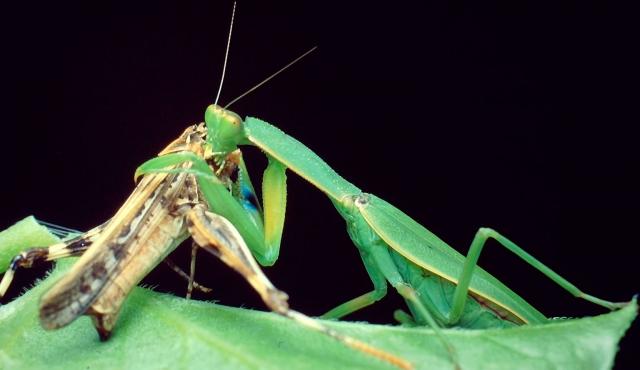A range of teacher professional learning programs will be developed to accompany the Biodiversity of the Western Volcanic Plains online outreach...

Garden Mantis
Orthodera ministralis
Solitary. They can keep very still for long periods of time to ambush prey as it moves past, seizing the prey with their powerful forelegs. Females lay hundreds of eggs inside a foamy substance which hardens into a case, usually attached to a leaf, stem, wall or fence.
| Details | Description |
| Type | Invertebrate |
| Group | Insect - Mantis |
| Other Common Names | Green Mantid |
| Identifying Characteristics | |
| Distinctive Markings | Large bulging eyes in a triangular head, and a wide thorax. Blue spot on front legs. |
| Diet | Carnivore. Eats many crop and garden pests. They are eaten by insectivorous mammals, birds, lizards and hunting wasps. |
| Habitat | Lives in a wide range of vegetation types, including gardens. |
| Native Status | Native to Australia |
| Taxonomy | |
| Phylum | Arthropoda |
| Class | Insecta |
| Order | Mantodea |
| Family | Mantidae |
| Genus | Orthodera |
| Species | ministralis |

Distribution maps indicate current and historic locations where species have been sighted.
Source: Atlas of Living Australia
| Conservation Status | |
| DEPI Advisory List | Not listed |
| FFG Act | Not listed |
| EPBC Act | Not listed |
The conservation status of species is listed within Victoria and Australia.
The Department of Environment and Primary Industry (DEPI) Advisory List consists of non-statutory advisory lists of rare or threatened flora and fauna within Victoria.
The Flora and Fauna Guarantee Act 1988 (FFG Act) lists threatened species in Victoria. Under the Act, an Action Statement is produced for each listed species.
The Environment Protection and Biodiversity Conservation Act 1999 (EPBC Act) is the Australian Government’s key piece of environmental legislation, listing nationally threatened native species and ecological communities.



